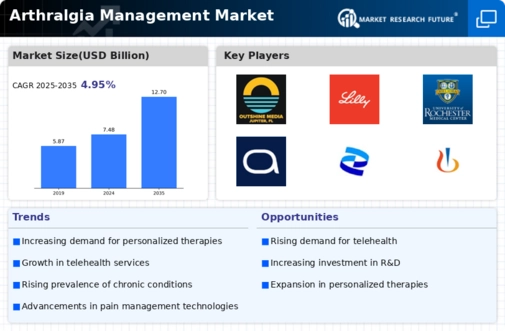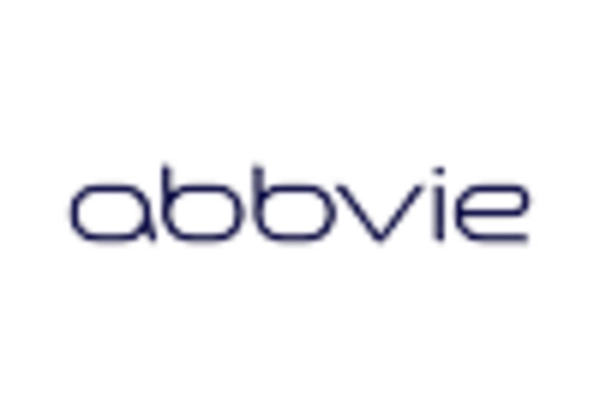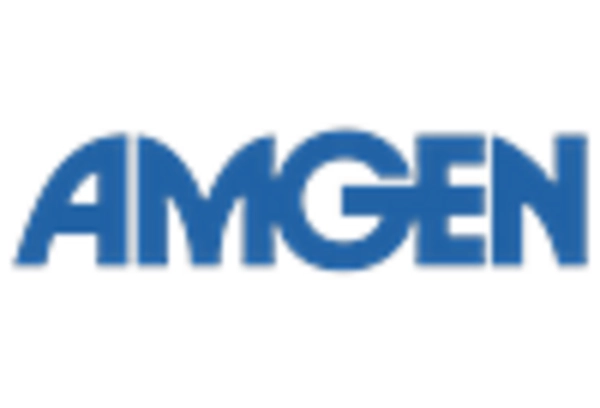Rising Prevalence of Arthralgia
The increasing prevalence of arthralgia conditions, such as osteoarthritis and rheumatoid arthritis, is a primary driver of the Arthralgia Management Market. According to recent estimates, millions of individuals are affected by these conditions, leading to a heightened demand for effective management solutions. This trend is particularly pronounced among aging populations, where the incidence of joint-related ailments escalates. As the number of patients requiring treatment rises, healthcare providers are compelled to explore innovative therapies and management strategies. Consequently, this growing patient base is likely to stimulate investments in research and development, thereby enhancing the overall landscape of the Arthralgia Management Market.
Increased Awareness and Education
There is a notable increase in awareness and education regarding arthralgia and its management, which serves as a crucial driver for the Arthralgia Management Market. Healthcare campaigns and patient education initiatives are fostering a better understanding of arthralgia, its symptoms, and available treatment options. This heightened awareness encourages individuals to seek medical advice and explore management strategies, thereby expanding the patient population. Furthermore, as patients become more informed, they are likely to engage in discussions with healthcare providers about their treatment preferences, potentially leading to a more personalized approach in the Arthralgia Management Market.
Technological Innovations in Treatment
Technological innovations are reshaping the landscape of the Arthralgia Management Market. The integration of telemedicine, wearable devices, and mobile health applications is enhancing patient monitoring and engagement. These technologies facilitate remote consultations and allow for real-time tracking of symptoms and treatment responses. As a result, patients can receive timely interventions, which may improve adherence to treatment regimens. The market for digital health solutions is expected to expand, with projections indicating a significant increase in adoption rates among both patients and healthcare providers. This trend underscores the potential for technology to revolutionize the management of arthralgia.
Advancements in Pharmaceutical Research
Recent advancements in pharmaceutical research are significantly influencing the Arthralgia Management Market. The development of novel analgesics and anti-inflammatory medications has expanded treatment options for patients suffering from arthralgia. For instance, biologics and disease-modifying antirheumatic drugs (DMARDs) have shown promising results in managing symptoms and improving quality of life. The market for these pharmaceuticals is projected to grow, with estimates suggesting a compound annual growth rate of over 5% in the coming years. This growth is indicative of the ongoing commitment to enhancing therapeutic efficacy and patient outcomes within the Arthralgia Management Market.
Growing Demand for Non-Pharmacological Therapies
The growing demand for non-pharmacological therapies is emerging as a vital driver in the Arthralgia Management Market. Patients are increasingly seeking alternative treatment options that complement traditional pharmacological approaches. Interventions such as physical therapy, acupuncture, and dietary modifications are gaining traction as effective means to alleviate symptoms. Research indicates that non-pharmacological therapies can enhance overall treatment outcomes and improve patient satisfaction. As healthcare systems recognize the importance of holistic approaches, there is likely to be an increase in the integration of these therapies into standard care protocols, further shaping the Arthralgia Management Market.


















Leave a Comment